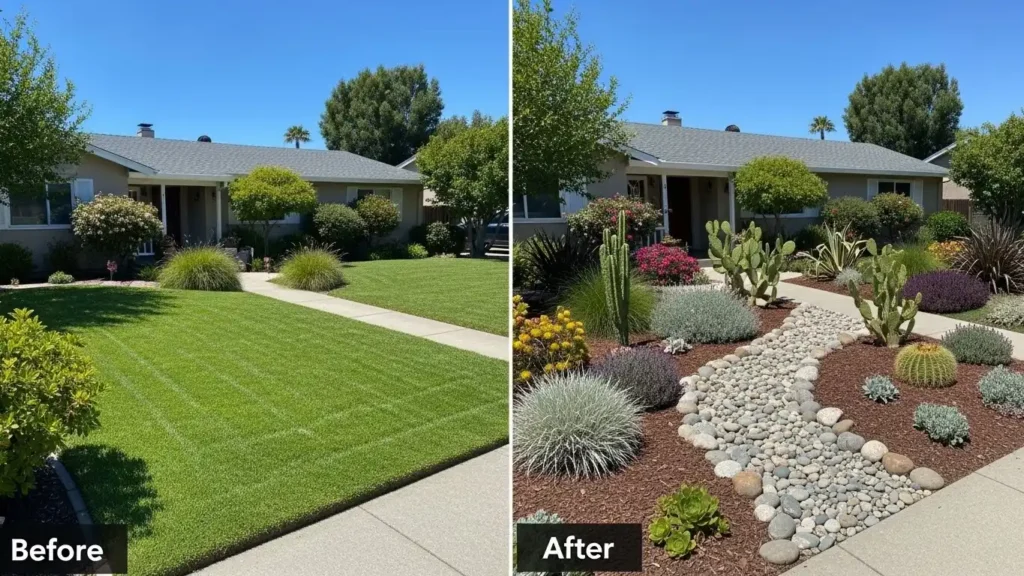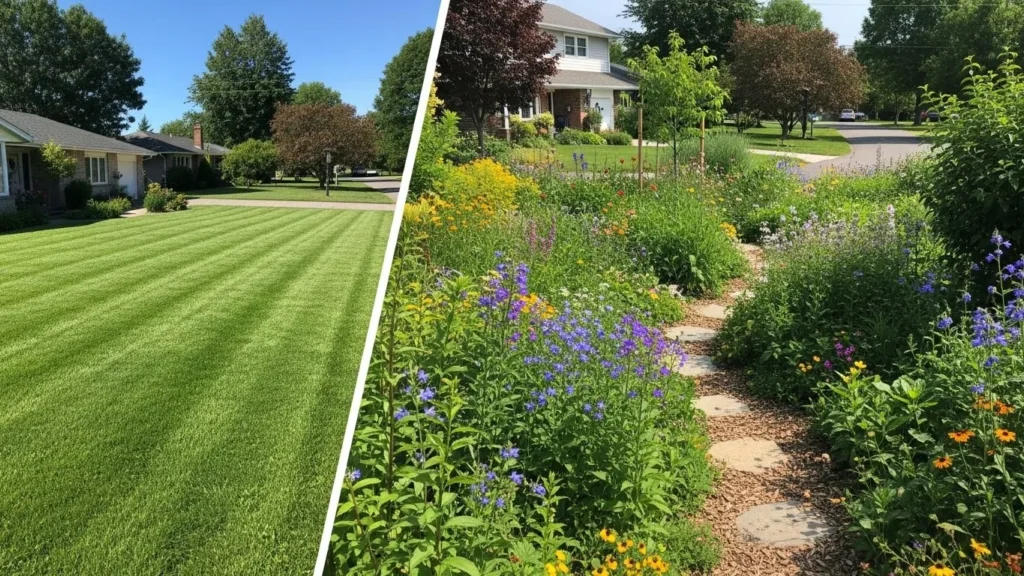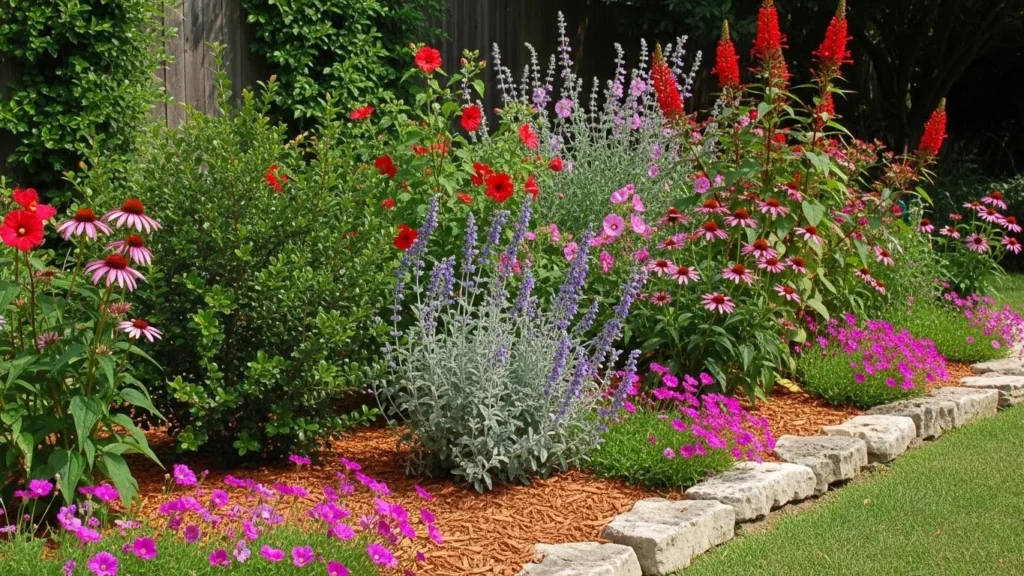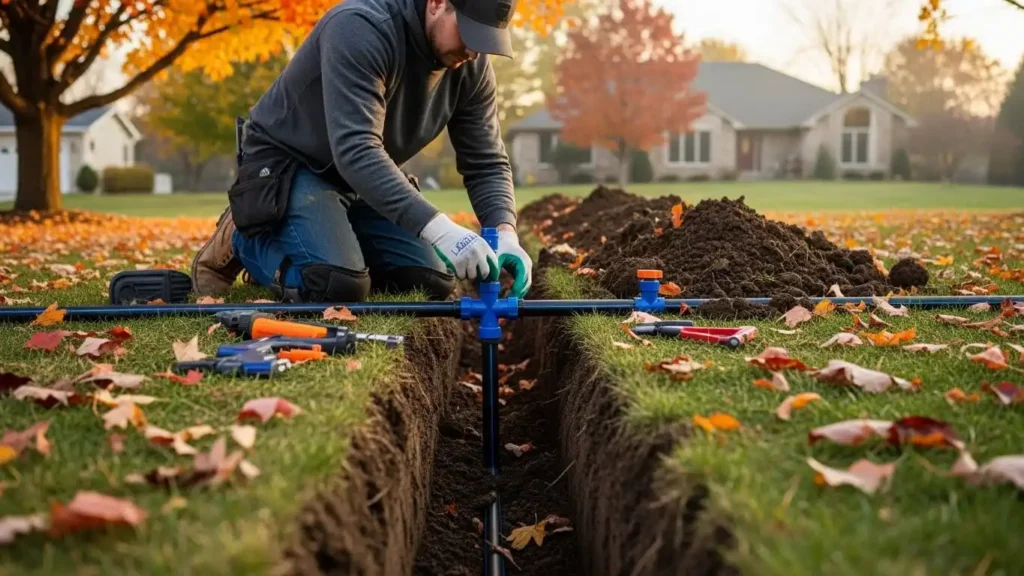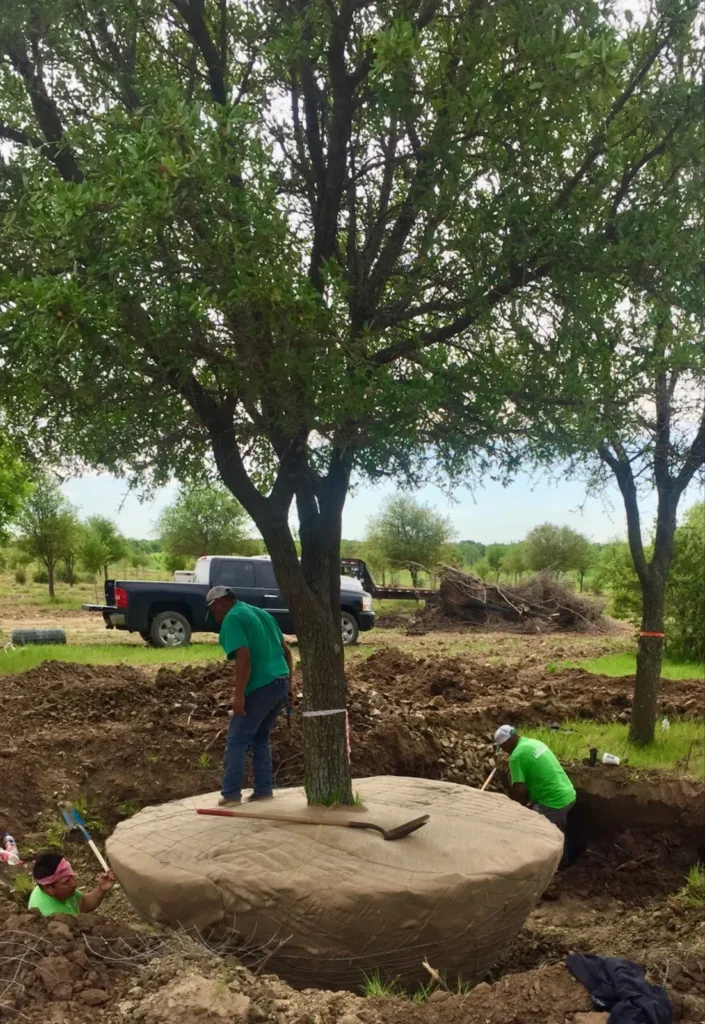Table of Contents
ToggleIntroduction — why drainage matters
Good drainage protects lawns, plants, and the home itself. What begins as a soggy patch can lead to erosion, damaged hardscapes, foundation moisture, and costly repairs. Tackling drainage problems in fall — before freeze-thaw cycles and winter storms — gives you more options and lower costs. The right mix of quick fixes and long-term systems will preserve landscape health and protect structures.
Top Warning Signs Your Yard Needs a Drainage System
Persistent standing water after normal rain
If puddles remain for 24–48 hours after moderate storms, soil infiltration is poor. Standing water in low areas or near your foundation indicates surface or subsurface drainage failure.

Persistent standing water is the most obvious sign your yard needs drainage.
Soggy, patchy or collapsing turf
Brown, thinning, or mushy turf (especially after light rains) usually means roots are undersupplied with oxygen because the soil remains waterlogged. Turf loss on slopes often signals concentrated runoff removing the growing medium.

Soggy, failing turf often means soil isn’t draining properly.
Water in basements, crawlspaces, or constant sump pump activity
Any indoor water, musty odors, efflorescence (white mineral deposits) or a sump pump that runs frequently after normal rain are urgent signs that water is reaching foundation levels. These conditions require immediate attention.
Foundation cracks, efflorescence or wet walls
Recurrent moisture against foundations produces mineral stains and can cause small cracks that grow over time. Freeze-thaw cycles make this worse and put structural integrity at risk.
Erosion, gullies or exposed roots
Channels carved by flowing water, washed mulch, and exposed roots show that water is moving unchecked. Erosion not only degrades soil and plantings but can accelerate into larger slope failure if not corrected.
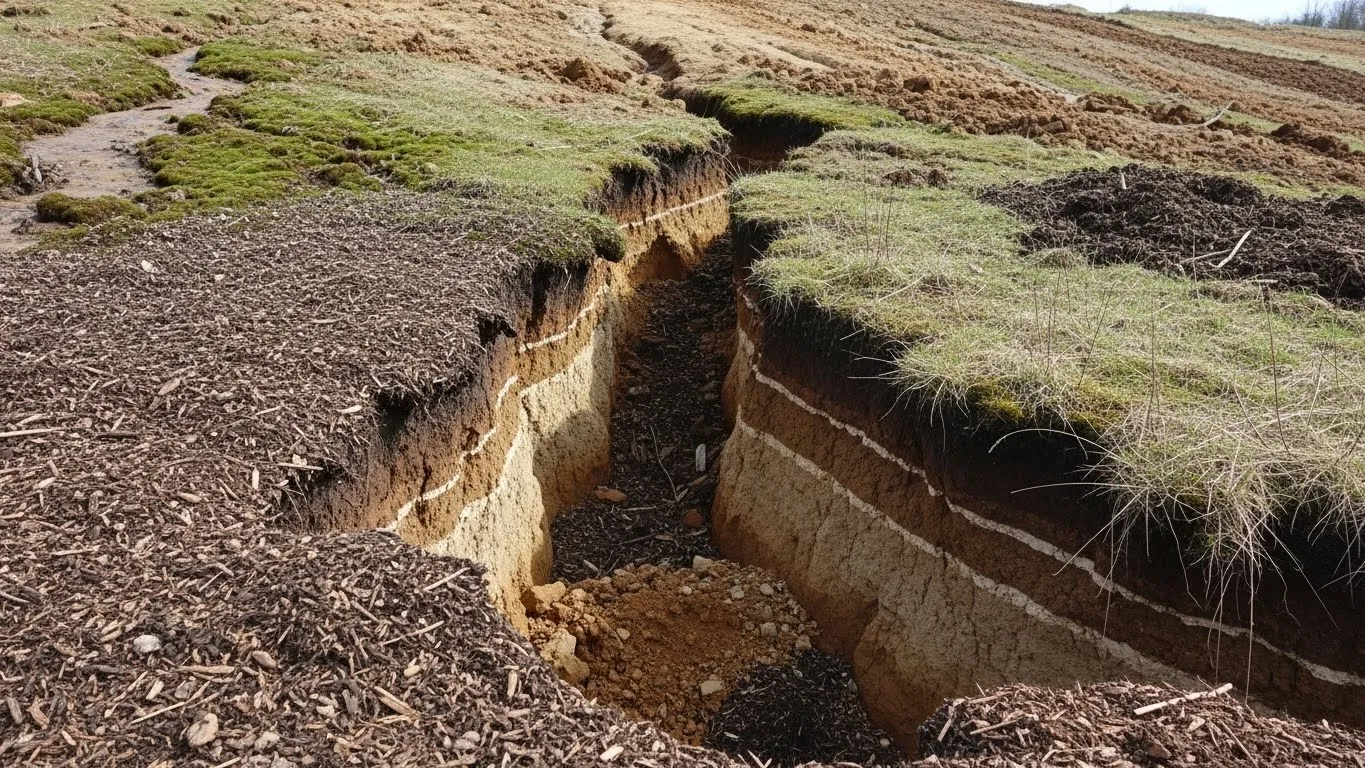
Erosion and gullies show water is moving unchecked across the landscape.
Mushrooms, fungus or unusually lush patches
Areas that stay wet support fungi and moss. If you see mushrooms or unusually green, spongy patches, it’s often a symptom of chronic saturation.
Ponding near sheds, patios or walkways
When water pools at the edges of hardscapes, under shed thresholds, or beside walkways, perimeter drainage is failing. That causes rot, slips, and damage to structures and pavements.
Quick DIY Checks You Can Perform Today
- 24-hour puddle test: Note how long puddles last after a moderate rain. If more than 24–48 hours, infiltration is poor.
- Percolation hole test: Dig a 12″ × 12″ hole, fill it with water, and time the drop. Less than 1″ per hour suggests slow infiltration.
- Slope check: The ground should slope away from foundations at roughly 1–2% (a 1–2 ft drop over 100 ft).
- Visual inspection: Trace flow paths from roofs and driveways. Note where water concentrates and where it exits your property.
Common Causes of Poor Drainage
- Compacted clay soils that are naturally slow to absorb water.
- Flat or inverted grades where the yard slopes toward the house.
- Gutter and downspout failures that dump roof runoff too close to foundations.
- High groundwater or natural springs that keep soil saturated.
- Impermeable hardscapes like patios or driveways that block infiltration.
Practical DIY Solutions
For minor issues, simple fixes can make a big difference. Clean gutters and use downspout extenders to discharge water 6-10 feet from the foundation. For more persistent surface water, creating gentle regrades or shallow, vegetated channels called swales can redirect flow. You can also build rain gardens with moisture-tolerant native species to capture and infiltrate runoff.
Professional Drainage Systems — What to Expect
For more serious issues, professional drainage solutions are necessary.
- French Drains: A French drain uses a perforated pipe in a gravel-filled trench to intercept and carry away subsurface water, protecting foundations and drying out saturated areas.
- Catch Basins: These collect concentrated surface flow from areas like driveways and patios, moving it into buried pipes.
- Dry Wells: Underground structures that collect runoff and allow it to slowly soak back into the ground.
Materials Checklist & Ballpark Costs
- 4″ perforated pipe: $1–$3/ft (material)
- Washed gravel (¾”): $40–$80 / cubic yard
- Landscape fabric: $15–$50 / roll
- Catch basin units: $50–$300 each (material)
- Professional French drain installation: $1,200–$5,000+ (scope dependent)
- Regrading: $500–$3,000+ (equipment and volume dependent)
FAQ
Will a French drain stop all flooding?
No. French drains manage subsurface water. For heavy surface runoff, they are often combined with regrading, swales, or surface drains.
How much slope do I need away from my house?
Aim for a minimum 2% slope (about 1/4″ per foot) to move water safely without causing erosion.
Can I install these systems myself?
Simple tasks like downspout extensions and small rain gardens are DIY-friendly. Subsurface systems or large regrades near foundations are best left to professionals.
Conclusion & Next Steps
If you notice persistent puddling, soggy turf, erosion, or foundation moisture, act now. Start with the quick checks and simple DIY fixes. For chronic or structural issues, arrange a professional assessment to design a comprehensive drainage plan. Timely intervention protects your landscape, saves repair costs, and preserves your property value.
Written by Let Us Do It Landscaping (LUDI).
Need a drainage assessment or professional installation? Contact us for a quote!

